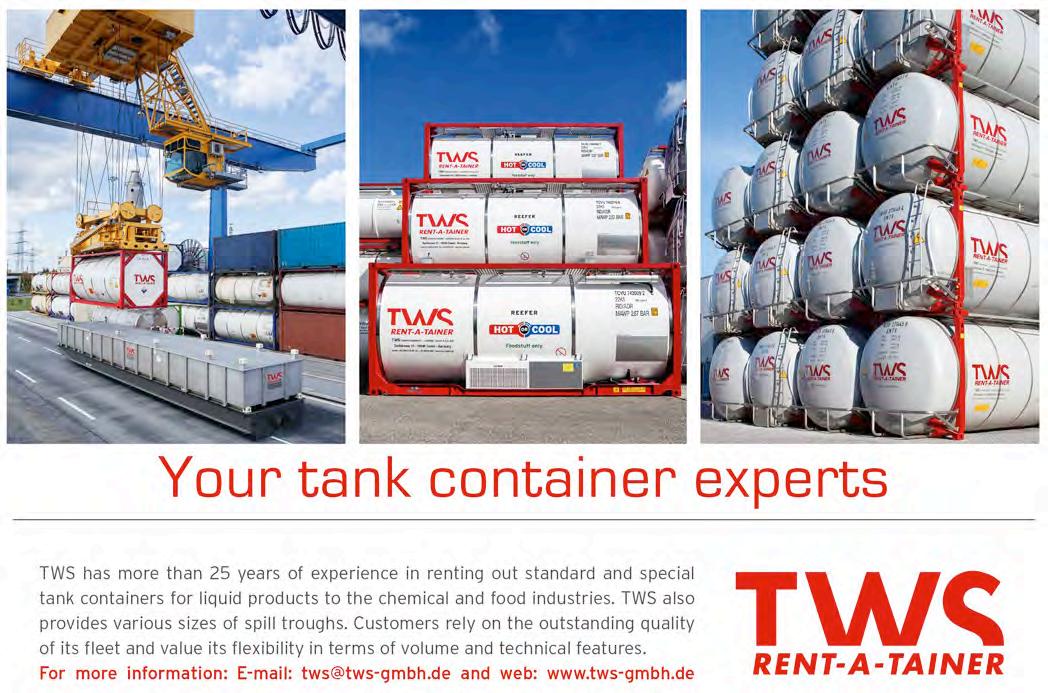
4 minute read
Nijhof Wassink gets connected
LET’S GO LIVE
CONNECTIVITY • NIJHOF-WASSINK BELIEVES THAT ANY LOGISTICS SERVICE PROVIDER THAT IS NOT DIGITISING THE SUPPLY CHAIN IS CONDEMNED TO FALL BEHIND ITS COMPETITORS
“OPTIMAL CONNECTIVITY 24/7 and from any location means maximum efficiency and productivity,” says Nijhof-Wassink, riding the wave of the newly digitalised supply chain. “This applies to our own processes, but primarily also for our clients. Under the name Nijhof-Wassink LIVE, we are working on the unlimited exchange of data between people and IT systems, but also between mutual systems.”
This is the basis of the latest development at the Netherlands-based bulk transport and logistics firm. Its new Transport Management System (TMS) provides its own transport planners, its clients and their customers with real-time, ‘LIVE’ information.
“Everything is about data these days,” observes Mark Burgman, Nijhof-Wassink’s business improvement manager. “The better you have set that up at the front, the better the odds of being successful on the bottom line. A large number of companies are only now starting to work with a digital plan system but at Nijhof-Wassink we have been doing this since the 1990s. We were also one of the first transport companies with onboard computers in the trucks.”
The latest iteration of the company’s digital platform provides information automatically all the way through the logistics chain. When a driver arrives to load, he presses a button and a notification is sent; the same thing happens when he starts to load and again when he is ready to leave. This gives much more control over the process. “Approximately 150,000 status updates are exchanged between the various systems every single day,” Burgman notes.
Benno Hulzink, operations manager for Nijhof-Wassink’s dry bulk logistics division, agrees: “This system allows us to genuinely plan in real time, really LIVE. It calculates how long the expected journey time is. If there is an overnight stop, this is automatically included in the planning. In this way you know what the arrival time will be. The information is constantly kept up to date, so there is realtime shipment information. If the loading takes longer than anticipated or if the driver gets stuck in a traffic jam, this will be determined by the GPS connection and the planning will be automatically updated.”
BOTTOM-LINE BENEFITS Providing this sort of real-time information to its clients is, Nijhof-Wassink believes, a competitive advantage. “Anyone can drive from A to B,” Burgman says. “If you want to keep meeting the needs of your clients, you need more than a good truck and a driver. You also require state-of-theart automation and a far-reaching integration into the supply chain of your client.”
Hulzink illustrates what this means in practice. “We are increasingly faced with time slots that have been determined by the client. If you can plan in real time you can also plan towards such a time slot. In the old TMS there was still a lot of human thinking – subjective estimations on the basis of experience.” The new TMS provides that information quickly, objectively and in much more detail. Clients thus benefit from better delivery performance while Nijhof-Wassink optimises its own performance.
An important element of the new TMS is the way it communicates with clients’ own systems, either directly or through an intermediary platform such as Transwide or Elemica. “The client order comes to us automatically,” explains Hulzink. “Typing out information is
BETTER VISIBILITY ALLOWS NIJHOF-WASSINK TO
PROVIDE BETTER CUSTOMER SERVICE AND EMPLOY
no longer necessary and this reduces the chance of errors. This also gives our planners the time and space to set up their work differently – they can focus more on further increasing our level of service by, for example, checking whether the requirements of the transport are properly adhered to. This is crucial, in particular with chemical companies, because there even a small error in an order can lead to significant damage claims and other potentially tricky situations.
“During the implementation of the order the client constantly receives status updates, up to and including the moment the cargo has been unloaded. The client can then immediately invoice – he no longer needs to wait for a consignment note, because it has already been scanned by the driver in his truck and is already in the system.”
JUST THE START Such an approach also improves safety in the logistics chain. “You get more traceability,” Burgman says. “We can get the system to also supply number plates, so the client knows which truck he can expect at the gate.”
But what Nijhof-Wassink has achieved so far is just the beginning. Hulzink explains: “We want to move towards a system that can, for instance, devise a planning proposal itself, based on orders. With such partial automatic planning, the planners can fill their time even more efficiently. It is essential, though, that they are always in control: a planner must always be able to overrule instructions from the system.
“We are already cautiously experimenting with this time of automated planning and the first results are positive,” Hulzink adds.
“With Nijhof-Wassink LIVE we can achieve the ultimate digital supply chain network, together with our clients,” Burgman says. “Thanks to 24/7 real-time information, we can offer the end client the service level that matches the modern era.” HCB www.nijhof-wassink.com








